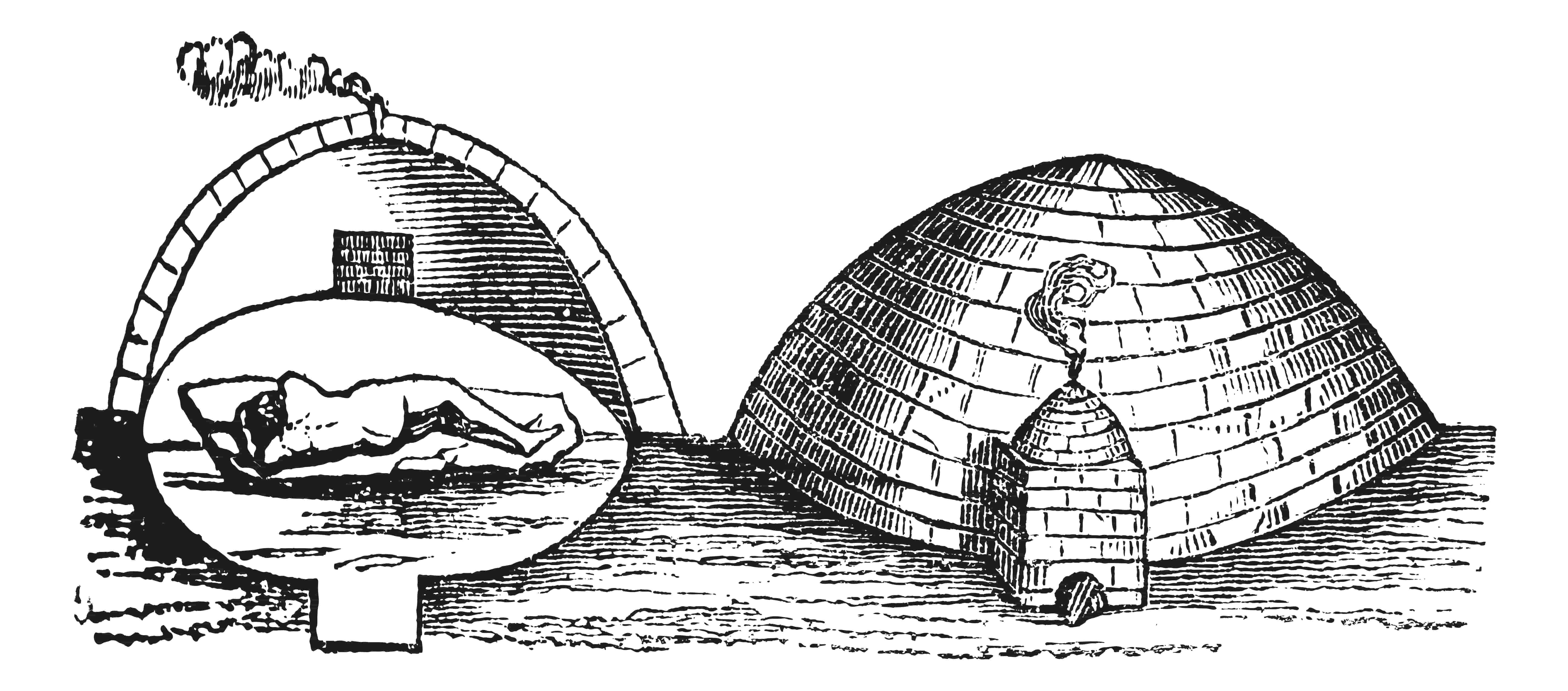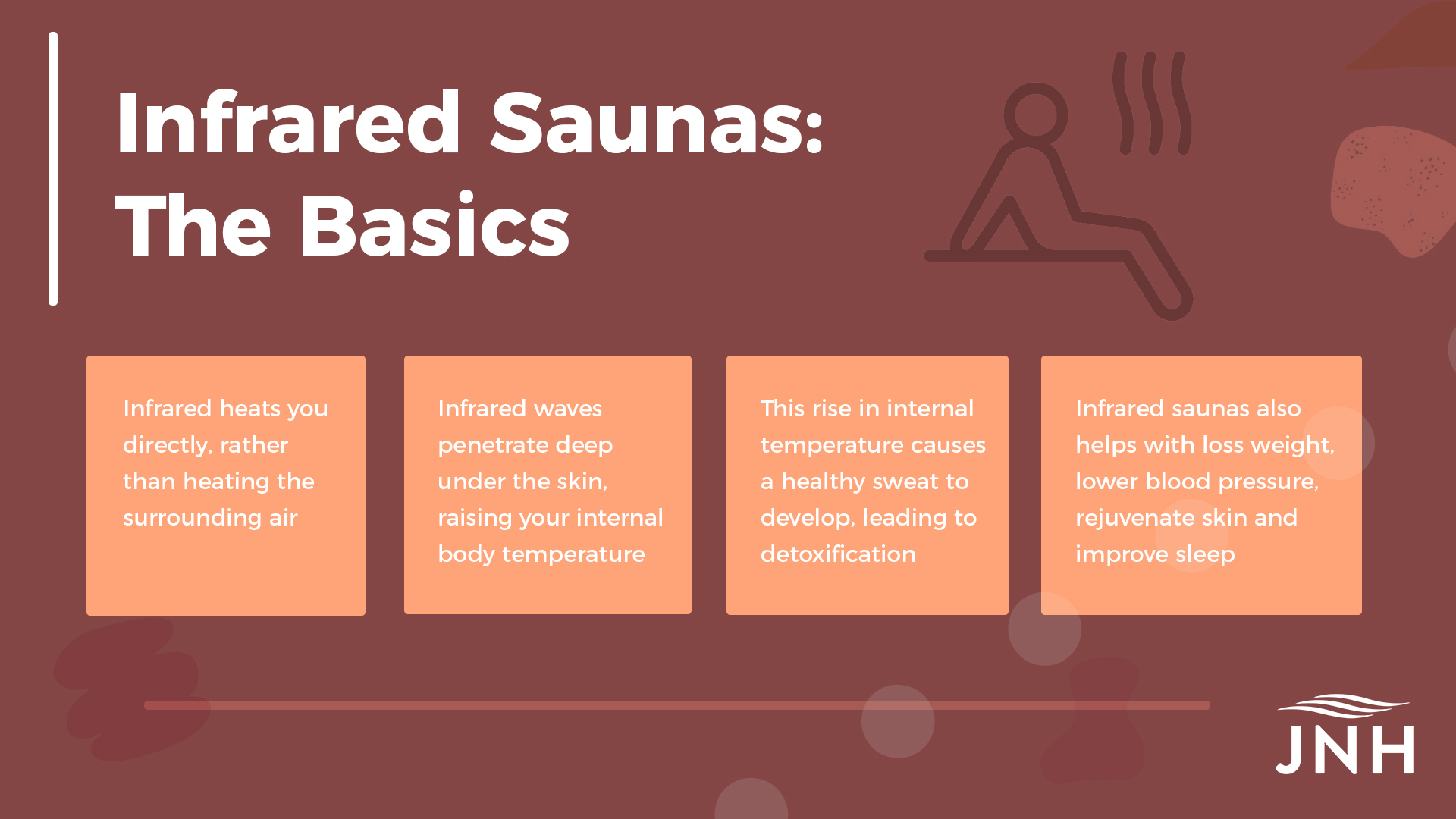How Does an Infrared Sauna Work? Discover How This Amazing Technology Is Changing the Health Industry
It’s never been more important to pay attention to your health than it is today. The world is on the verge of climate catastrophe with pollution reaching its highest peaks this year [1]. Not only can you breathe in pollutants, but they can also get into the body by being absorbed through the skin, and increase the buildup of toxins in the organs and bloodstream.The busy way of life is taking its toll on the body and mind, leading to a rise in depression, obesity, cardiovascular diseases and cancer.
You need to take care of yourself with a proper diet, regular exercise, and resources at your disposal that can change your life for the better. Infrared therapy is one of those resources that has shown effective application in medical science that can improve a person's health [2].
Thanks to technological advancements, this type of therapy is now available to all in the form of personal infrared saunas. Before we go into that, let’s start from the beginning.
A Long-Standing Sauna Culture
Everyone knows what a sauna is, and most people have had an opportunity to try some form of it in their lifetime. It stems from the practice of eliminating toxins with heat, which dates back to the Neolithic Age. During this time, some 12,000 years ago, humans lived in nomadic tribes who used hot springs on their travels to warm up and clean themselves.

Throughout history, civilizations used heat in public baths to cure ailments and remove dirt from their bodies.The Turkish hammam has a hot steam room to purify the soul, Japanese thermal baths – onsen are praised for rejuvenation, and Korean jimjilbang use jade in saunas to help with joint pain.The Native American sweat lodge was used for spiritual cleansing in the form of a ritual,which took place in a tent with heated rocks placed in the middle. During this 400-year-old ritual, the leader would pour water on the rocks, creating steam that filled the tent while participants prayed and sang.Then, there’s the Finnish sauna — the most common type of steam bath in the world dating back to the 12th century [3].
All these heat treatments are not readily available, and to feel their therapeutic properties you need to travel to another country or pay a spa/gym membership fee. With the emergence of personal infrared saunas, this is not an issue anymore since now you can enjoy all the benefits of a sauna comfortably and easily within the confines of your own home.
How Infrared Light Came Into Everyday Life
What started as a curiosity for Sir William Herschel in 1800, turned out to be one of the turning points in science. His interest in finding out how much heat passes through different colors led to the discovery of infrared light and defining its spectrum. Today, this technology has many applications, and being implemented in the health industry is one of them.
In the 19th century, with the invention of electricity, came the first infrared sauna. John Harvey Kellogg, arguably the father of infrared saunas, believed in purification through sweating. It took almost 70 years after Kellogg for NASA to discover near, mid and far infrared wavelengths. And after Japanese doctors popularized ceramic far infrared saunas as treatments, they became available for the public in 1979 in the US.
Changes To The Health Industry
The function of an infrared sauna is not to heal you, but to help your body and mind get better. Many studies over the years have proven the health benefits that come with regular usage of an infrared therapy. To understand how infrared saunas work, you need to know what IR (infrared) light does to the body. Unlike traditional saunas which heat the air and then the body, IR light heat you directly rather than focusing on the air.
The IR light penetrates deep under your skin, raising your temperature and making you sweat without overly heating the air inside the cabin. This can have various health benefits, like helping with weight loss, lowering blood pressure, rejuvenating skin and improving sleep [4]. Some other health benefits of infrared saunas is that it can relieve pain, reduce inflammation and accelerates healing because it improves blood circulation, which delivers nutrients to organs [5]. The most obvious result of exposure to an infrared sauna is sweating (detox) — one of the ways to eliminate toxins from the body [6].

All these benefits can all have a significant impact on the health industry by reducing the use of certain medications, like painkillers. Based on the National Institute on Drug Abuse, addiction to opioids has become a serious national crisis, with 128 people in the US dying from it every day. The health benefits of an infrared sauna may also reduce the use of sleeping pills, antibiotics and antidepressants, which are also overly prescribed and used.
Personal infrared saunas can bring a plethora of health benefits to its users without emptying their wallets. Paired with a healthy lifestyle, this device can help you improve your health and prevent the onset of certain diseases. You can choose a one-person sauna or a bigger to fit your whole family. Installing it won't be a problem either, since they can go anywhere inside your home, even in your bedroom. If you have questions about infrared saunas or need advice, contact JNH Lifestyles’ customer service and our specialists will gladly help you choose the right one for you.

Resources:
[1] Lelieveld, J, et al. (2020). “Loss of life expectancy from air pollution compared to other risk factors: a worldwide perspective.” academic.oup.com, Oxford Academic, March 2020, https://academic.oup.com/cardiovascres/advance-article/doi/10.1093/cvr/cvaa025/5770885.
[2] Tsai, S, et al. (2017). “Biological effects and medical applications of infrared radiation.” sciencedirect.com, Journal of Photochemistry and Photobiology B: Biology, Volume 170, May 2017,https://www.sciencedirect.com/science/article/abs/pii/S1011134416311691.
[3] Sood, S. (2012). “The origins of the bathhouse culture around the world.” bbc.com, BBC, November 2012, http://www.bbc.com/travel/story/20121129-the-origins-of-bathhouse-culture-around-the-world.
[4] Podstawski, Robert, et al. (2014). “Sauna-Induced Body Mass Loss in Young Sedentary Women and Men.” ncbi.nlm.nih.gov, National Center for Biotechnology Information, December 2014, https://www.ncbi.nlm.nih.gov/pmc/articles/PMC4295591/.
[5]Brunt, V. E, et al. (2016). ”Passive heat therapy improves endothelial function, arterial stiffness and blood pressure in sedentary humans.” ncbi.nlm.nih.gov, National Center for Biotechnology Information, June 2016, https://www.ncbi.nlm.nih.gov/pubmed/27270841.
[6] Sears, Margaret E, et al. (2012). “Arsenic, Cadmium, Lead, and Mercury in Sweat: A Systematic Review.” hindawi.com, Journal of Environmental and Public Health, February 2012, https://www.hindawi.com/journals/jeph/2012/184745/.

